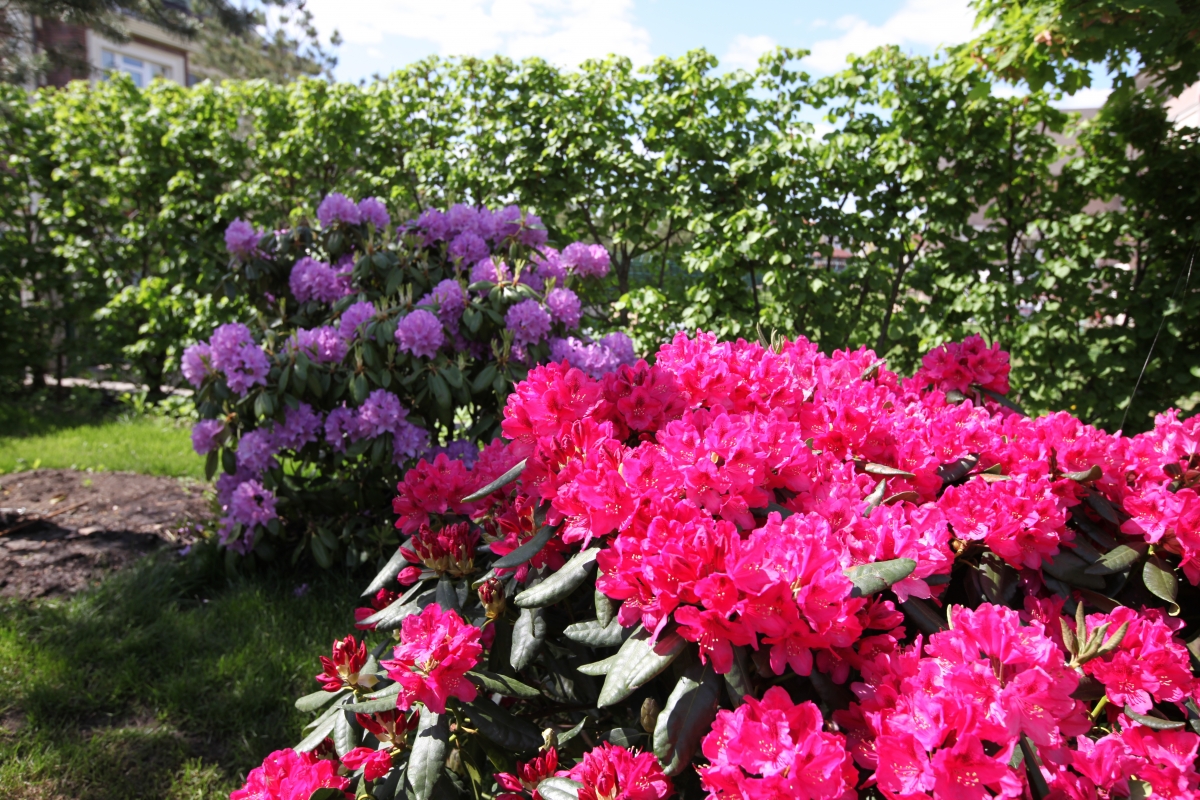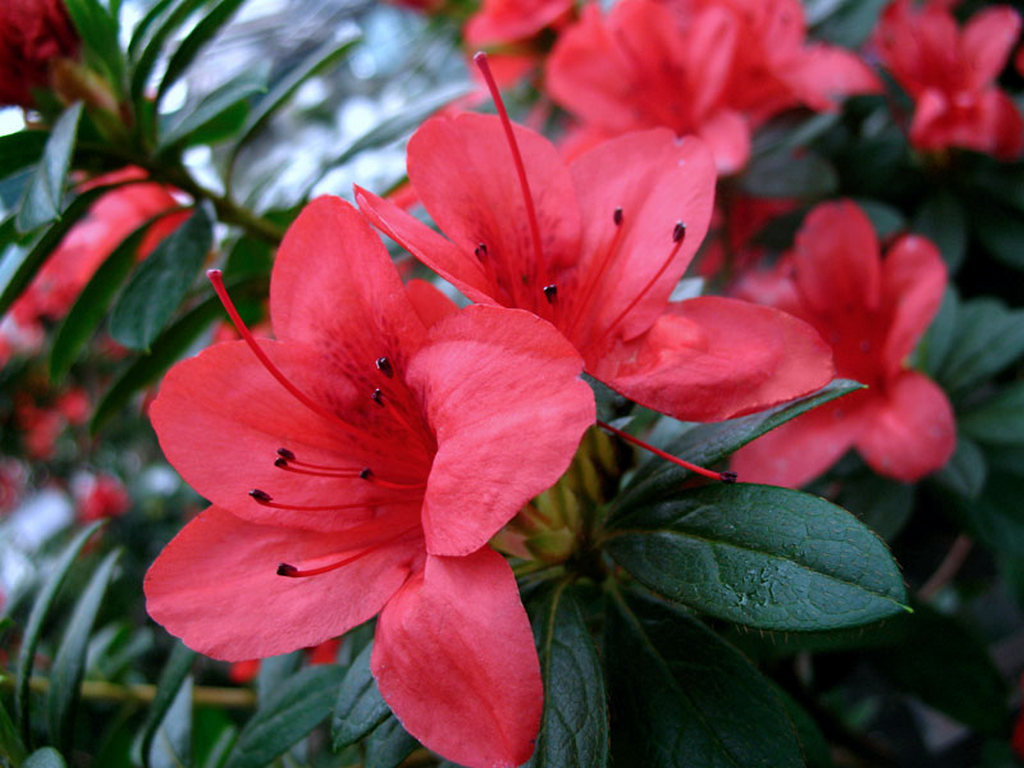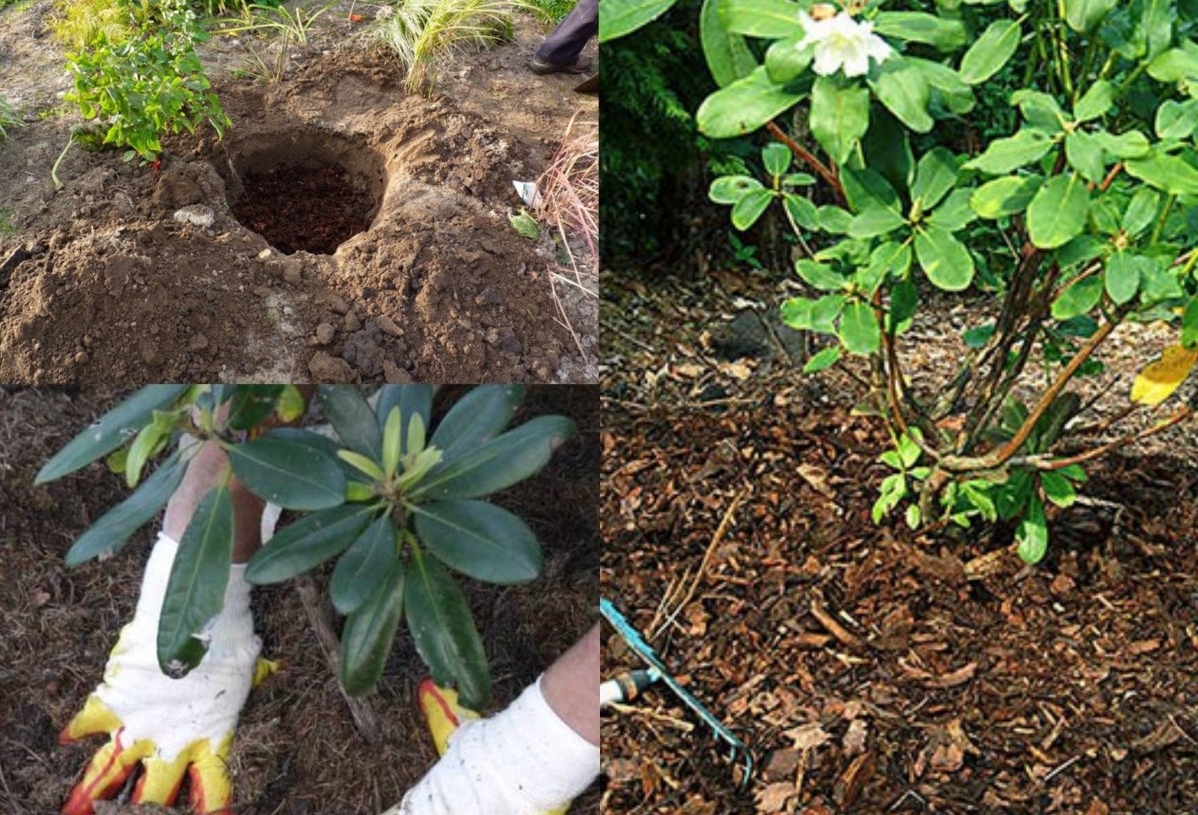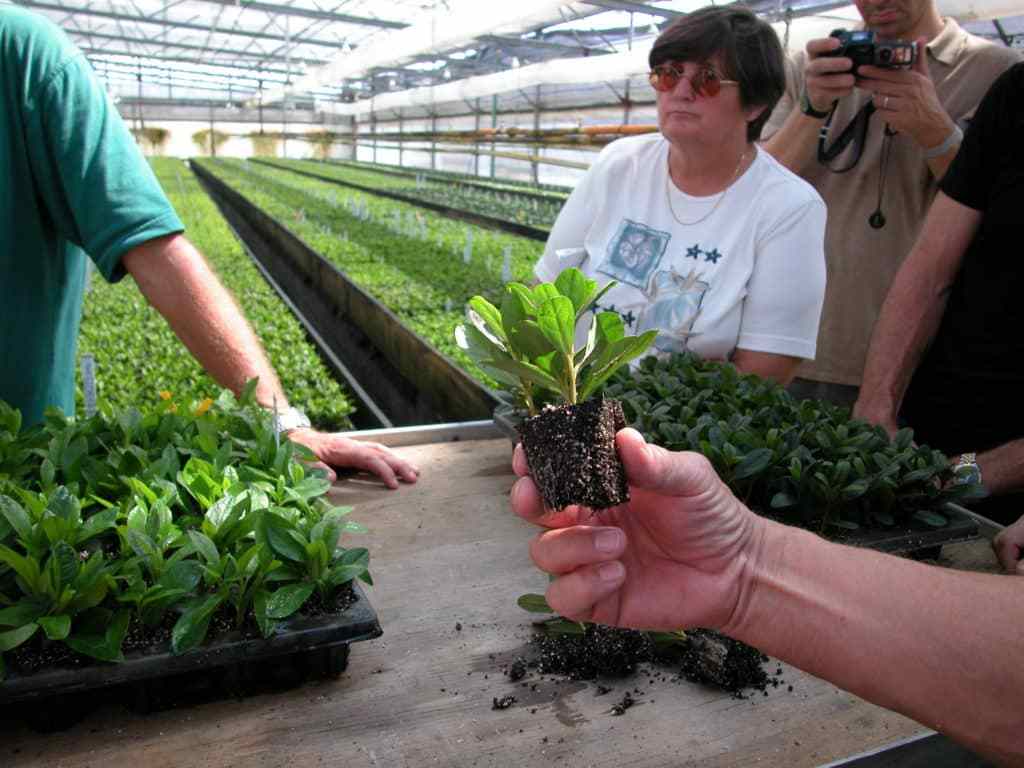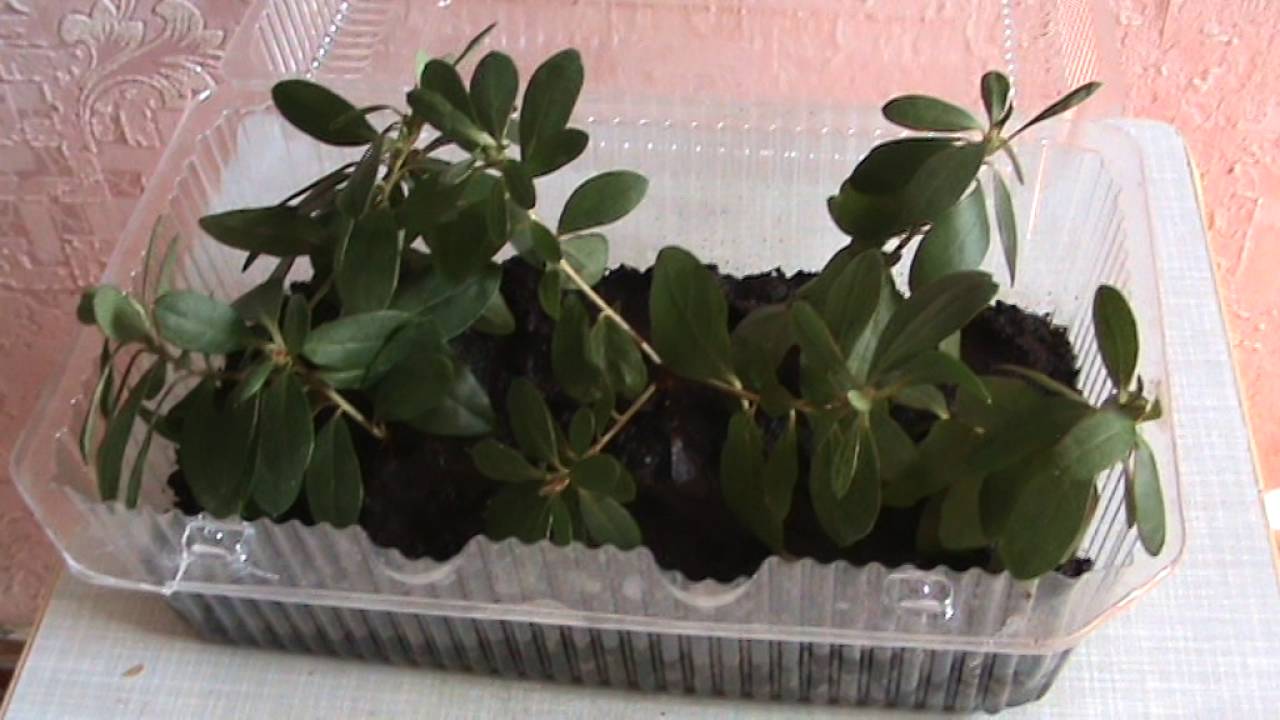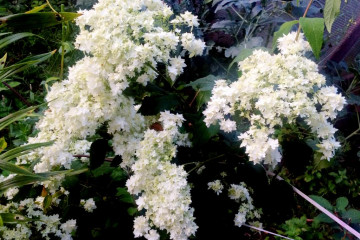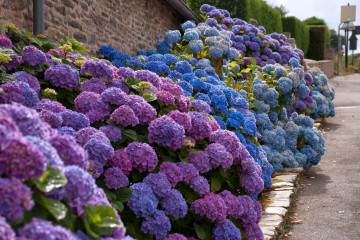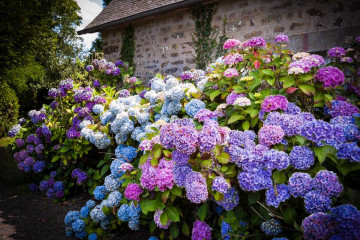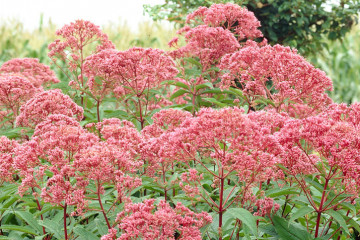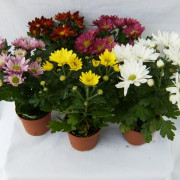Garden azalea - planting and care in the open field
Content:
In order for a summer house or a plot in front of the house to become a place for rest and tranquility, it is worth planting an azalea. The plant is a symbol of feminine beauty and tenderness. There is an azalea shrub and tree, it all depends on the variety and growing zone. Belongs to the Heather family. It is very popular in Europe and Japan. The second name is rhododendron, it describes the breeding characteristics of the plant.
Garden azalea: planting and care in the open field
Garden azalea, planting and care in the open ground which is carried out in accordance with certain rules, can become a real decoration of the suburban area. For planting in open areas, frost-resistant varieties are mainly chosen. Care consists in proper planting, feeding the soil, watering, pruning shoots and protecting against pests and diseases.
If all stages of rhododendron care are carried out in accordance with the recommendations, then it will bloom for a long time. Many gardeners choose an ornamental culture because of the unpretentiousness and beauty of the stem. Since azalea prefers shady places, it is thanks to this that it is possible to fill empty spaces in flower beds under trees where other crops cannot grow.
The origin and appearance of the plant
The habitat of the plant is the subtropical forests of Central Asia. You can meet the flower in Europe, North America. It got here as a houseplant that blooms in winter. In Japan, azaleas have been cultivated for centuries, in particular using the art of bonsai.
The hybrid azalea became widespread in the early 1900s. Nurseries began to actively fill with different plant varieties, which were especially fond of the Germans, British and Americans.
There are several crown options for different varieties: deciduous, pyramidal, semi-deciduous, ampelous and evergreen. The height of the stems can reach 1.5 m, the smallest specimens are not more than 50 cm. The leaves are glossy, have a closely green color, but pleasant to the touch. The stem is tree-like at the very base, diverges towards the top into green shoots. There are perennial and annual plant variants, it all depends on the variety.
Many people know one thing, azalea is a bush that is constantly green and blooms profusely for several months in a row.
Plant flower descriptions
The flowers of the plant are worthy of a separate description. At the moment of active growth, a bush or tree resembles a fireworks display, since there are so many buds that leaves are not visible behind them. Main features of azalea flowers:
- flowering usually lasts 60 days and occurs from April to the end of November;
- the flower can be the most common or double bud;
- the colors of the buds can be varied: yellow, purple, lilac, white, gold, dark purple, orange.
Florists distinguish between several types of flowers. An ordinary bud consists of five petals and as many stamens. Terry forms have many petals, which are obtained even from stamens."Flower in a flower" - 12 petals that form a "cup".
Types and varieties
In nature, there are more than 600 plant species that have a different appearance and flowering pattern. At home, only two are most often found - Indian and Japanese azalea. This is an outdoor and indoor azalea, so there are no fundamentally huge differences between the representatives of the plant.
There are other less common varieties obtained by breeding. The differences between them are determined by the timing of flowering, the size and color of the buds. The size of a bush or tree is also a significant distinguishing feature.
The Indian species of the plant is distinguished by the peculiar appearance of the shrub. The flowers have bright colors and non-standard shapes, which distinguish the decorative culture from the rest of the front garden or flower beds. This variety does not withstand too low temperatures, the maximum is -10 ° С.
Japanese azalea
"Japanese" or, as it is also called, blunt azalea, is especially popular among gardeners. A plant variety that takes root in the soil without any problems and withstands the negative influences of the external environment. There are several subspecies of blunt azalea:
- Melina is a shrub variant with a height of about 50 cm with abundant flowering;
- Kermesina Alba is a short shrub with medium-sized white flowers;
- Petticoat azalea is a 50 cm tall perennial shrub with pale pink flowers;
- Ledikanense loves dark places, blooms in spring, throwing out purple buds.
Azalea Japanese planting and care in the open field tolerates positively. Japanese azaleas for the garden are used as bonsai. Thanks to the special technique of cultivating the trunk, you can get a unique, visually attractive mini-version of the plant.
Transplant after purchase in the open ground of garden azalea
Azalea in the garden can appear only in the spring, since the sale and transplantation are possible only during this period. The purchase must be made carefully, it is advisable to pay attention to the following nuances:
- the seedling must be in a special container with soil;
- the soil in the container must be moist;
- the sprout must be developed and not sluggish;
- there should be more than 10 leaves on the crown without dry or twisted tips.
What is needed for landing
Planting azaleas outdoors in spring begins with choosing a suitable location and preparing the ground. It is advisable to buy special soil in the store, but you can also prepare the substrate yourself. You will need the simplest components: peat, sand and several types of diverse land. The next step will be the preparation and planting of the seedling. At the end, watering is carried out. The whole procedure takes at least half an hour. Careful grooming within a few days of disembarkation is imperative.
Choosing the best place
So that the plant does not hurt and bloom, you need to find a suitable place in the garden. It is advisable to plant a specimen in partial shade, since direct sunlight can harm the plant. The ideal option would be a shade from a tree with a dense crown. It is advisable to choose places where the fence or fence is far from the bushes.
Step-by-step planting process
Bush or tree-like azalea does not require special conditions for normal planting. It is enough to use an elementary algorithm familiar to every florist. The planting process is carried out in accordance with the following stages:
- A pit is being prepared. The parameters should be such that the roots are evenly spaced, not bent. A drainage layer should fit at the bottom.
- Place the seedling exactly in the middle of the hole and sprinkle the roots with the prepared substrate.Do not tamp the landing site, let the earth remain loose for better air exchange.
- Spray the leaves with water from a spray bottle and moisten the soil in the same way. Watering from a bucket or watering can is undesirable for the first day. Next, you need to monitor the weather conditions.
Planting a flower is easy, the main thing is to monitor watering and feed on time. The principle of disembarkation does not differ from the standard procedure. The only difference is that the soil does not trample down after sprinkling the seedling.
Reproduction
Reproduction of an ornamental shrub or tree is a simple process - cuttings. It is almost impossible to grow an azalea from seeds, so breeding is done in one way.
Propagation by cuttings
This is the best option for breeding an ornamental culture. You can propagate the plant using cuttings in the spring. The procedure is carried out as follows:
- Choose a twig that should be at least 10 cm long.An ideal option would be a 12 cm stalk.
- At the top of the future seedling there must be at least two large leaves. There may be more green elements.
- Cut off the cutting at an acute angle and treat the cut with a special powder.
- Place the branch in a pot of peat and cover it with foil, creating a greenhouse. Watering is carried out with a spray bottle through a hole in the film.
- After a week, you can start lifting the film for a few minutes of airing and spraying the soil.
After rooting, which takes place within two months, a strong shoot can be planted in an open area with partial shade.
Azalea garden care
Garden azalea requires certain care, which consists in elementary actions:
- setting a clear watering mode. It is necessary to monitor the humidity near the azalea;
- it is not enough to plant a specimen in good soil, it is worth periodically feeding the soil;
- dry leaves and faded buds should be removed.
Due to the constant watering problem, many are reluctant to get involved with this kind of horticultural culture. But in fact, there are no particular difficulties in caring for an instance.
Watering mode
The plant loves moisture, so you need to follow the exact watering regimen. If an azalea is planted on the site, leaving on the street boils down to the following:
- moisten the soil if the top layer is dry;
- water at least once a day with water with a temperature of more than 20 ° C;
- moisten the leaves with a spray bottle several times a day.
Top dressing
Normal growth is ensured through proper soil preparation from the very beginning. The soil should consist of humus, sand, peat, coniferous, turf and peat land. The proportion of all components is the same.
In a month, it is worth feeding for the first time. It is better to use any fertilizer that is intended for ornamental garden plants. You need to repeat the procedure in 20-30 days.
Features of care during flowering
There are no global rules for care during the flowering period of rhododendron. The main thing is to carry out correct and periodic watering. Fertilizing the soil is also necessary so that there are enough minerals to support the life of not only the leaves and the trunk, but also a huge number of buds.
It is advisable to watch out for dry leaves and already faded buds.They need to be removed so that the feed goes to other parts of the plant. It is not advisable to prune branches at the time of active growth, this can lead to drying out and even death of the garden rhododendron.
Features of care during the rest period
Azalea, care and cultivation in the garden for which has its own nuances, spends a lot of energy on the formation of buds. The sunset of flowering is the most important moment, since during this period preparations are made for wintering, new buds are laid.
It is important at this moment to remove dry leaves and partially limp flowers from the branches. You can trim excess branches during this period. This must be done carefully. The pruner should be sharp, and the branches should be cut at a distance of 15 cm from each other.
More specifically, you do not need to care for the rhododendron during the rest period. You can even stop feeding the soil so that the berry does not develop and grow in cold weather. Watering should also be limited, the soil can be moistened from a sprayer.
Preparing for winter
Preparation of rhododendron for winter is carried out in accordance with the region of growth. In the more southern parts of the country, it is not necessary to specially insulate the plant, it will overwinter on its own, since the rhododendron is frost-resistant.
In the Moscow region and Central Russia, as well as in the Urals and Siberia, climatic conditions are more severe. Wintering must be ensured: insulate the trunk, sometimes you have to bend the branches and also insulate.
Garden azalea can become a real flower bed decoration. It blooms profusely for a long time, pleasing the eye with bright buds of various sizes and colors. There are several of the most popular varieties that are frost-resistant and easy to care for. Moderate frosts will not cause problems if the rhododendron grows in normal enriched soil and receives the necessary care during development and flowering.
